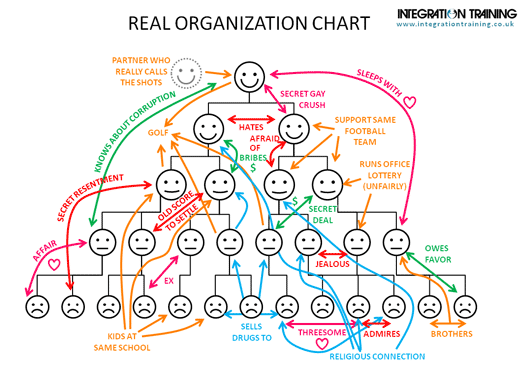An initiative was founded and after some time full commitment and commitment the first successes are achieved. This is usually the merit of a few within the organization, who are usually at the head of the initiative as idea providers and initiators, depending on the organizational form, as board members, managing directors or in another leading function. Sooner or later, these so-called “drivers” will find themselves in a position in which they will be allowed to bear a lot of responsibility and make important decisions that will set the pattern for the organization. But some may wonder what has become of the original idea to pull something together, when everything now only depends on one or a few people. And what happens if this person backs out of it one day (due to revision or for other reasons)? At the latest then it makes sense to think about how responsibility within an organisation can be spread on as many shoulders as possible.
The right legal form
The desire for a grassroots democratic form of organisation should be taken into account as early as possible when the initiative is founded. Depending on the legal entity (e.g. association, limited liability company or cooperative), the internal organisational structures are shaped differently (see also the contribution on the legal form). A limited liability company, for example, is relatively hierarchically structured in comparison to a cooperative. In a cooperative, the “one man – one vote” principle applies, i.e. every member has the same share of votes when it comes to decisions within the company.
Sociocracy, holacracy and evolutionary organizations
But even in a very grassroots democratic form of organisation such as a cooperative, internal structures must be created that lead to a balanced distribution of work and responsibilities. In the classic linear-hierarchical structure with a management at the top, power is delegated and distributed from top to bottom. But there is also another structure, which Brian Robertson calls an informal structure. It includes all relationships and entanglements between people within an organization.

Both the classic formal and informal structures often lead to problems and discontent within organisations. Therefore, alternatives are in demand, which Christian Rüther sums up as follows:
“In the last fifty years or so, many courageous entrepreneurs or managers have experimented and found alternatives. Gerard Endenburg has organized his electrical engineering business differently since the end of the 1960s by letting the employees make the basic and framework decisions in circles, on the basis of consensus. This has given rise to sociocracy (link to decision-making processes) as a new social technology. Brian Robertson adopted many principles of sociocracy about ten years ago and added other models to create his own version. The result was the Holacracy, whose flagship is currently Zappos. In the last five years, Frederik Laloux has investigated twelve other organisations that have been successfully different for several years. He found at least three common principles and called them evolutionary organizations: 1. self-organization, 2. wholeness and 3. purpose/sense.”
In his report Rüther gives a good overview of the various alternatives and presents their advantages and disadvantages.
Working teams
The system of working groups has established itself as one of the simplest methods for effectively distributing work and responsibility. Smaller sub-groups can be formed from each larger group to discuss certain topics outside the large plenary and prepare for the decision in the plenary. In the sociocratic system, these working groups even have decision-making powers, since they know best about the respective topic. The information from all working groups is gathered and coordinated by so-called delegates in a coordination circle.
Further information:
Compilation according to Christian Rüther (http://www.soziokratie.org/):
- Soziokratie Skript 2.7: 150 pages Soziokratie – comprehensive introduction (also available as book at BoD)
- Script “Soziokratie, Holakratie, Laloux”: 180 pages overview of all three approaches and other models (also available as book at BoD)
- Comparison between Holacracy and Sociocracy (in German)
- What is sociocracy?: Many further links
- Corporate democracy: many links to further reading
- Newwork matrix: New book project
- Comprehensive collection of Newwork case studies
- Comprehensive material collection for non-violent communication (GRP) = Super communication approach for Newwork
Stories of success
After various attempts, the people of the TransitionHaus Bayreuth group have found an organization that reflects the open character of the initiative. Every two weeks there is a meeting in which all topics are discussed, which concern the house, the higher initiative TransitionHaus Bayreuth or the non-profit association TransitionHaus Bayreuth registered association.
This meeting is open to all. The initiative tries to have someone present at these Monday rounds of every initiative that is active in the house. People are also present at these rounds who are not active for any initiative, but directly for the house. In addition to the “Orgarunde”, there are a total of eight working groups (AGs), into which the upcoming work is divided. Anyone who regularly comes to the Monday rounds should ideally be assigned to one of these working groups.
- AG Public Relations plus: Print & Online Media, IT Support, Event Coordination
- AG Association & Finance: Association funds, membership administration, insurance, legal matters
- AG Haussuche: Search for a further or permanent place to stay
- AG Hausmeisterei: Order and security in the house
- AG Kitchen: Informal between VoKü and TransitionCafé
- AG Art on the wall
- The AK Transition Vision has a special role and task.
The aim of implementing and monitoring De Wandleing’s activities was to find solutions that would enable both a harmonious social environment and productive work. This model is based on the existence of theme-based’decision circles’, e.g. founding circle, kitchen circle, garden circle, interior design circle. Each district has at least three organizationally embedded volunteers who are responsible for specific tasks. It also allows people who do not really want to interfere in the decision-making process to address a topic in one of the circles.
